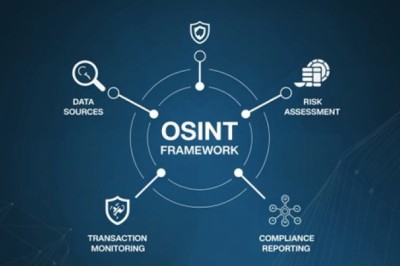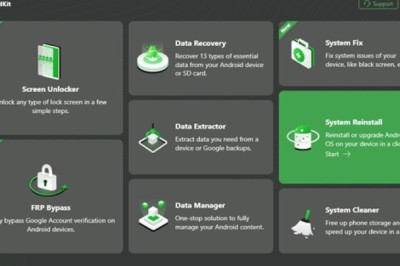views

Have you ever noticed how much of your workday disappears into routine tasks that repeat week after week? Sending reminders, checking data, updating reports, and following up with clients often take more time than the strategic work that actually grows your business. Imagine if you could delegate all of that — not to another person, but to a digital assistant that never gets tired, distracted, or delayed.
That’s where AI agents come in. These virtual helpers can take over the repetitive parts of client management, freeing you to focus on higher-value work like building relationships, solving problems, and creating new opportunities. They’re fast, accurate, and always available. Most importantly, they bring structure and consistency to workflows that usually depend on manual effort.
This article explores how AI agents can manage routine client tasks, what benefits they bring, and how businesses — from small teams to large agencies — can use them effectively.
The Challenge of Repetition in Client Work
Repetition is often the hidden cost of success. As a business grows, so does the list of ongoing tasks needed to maintain each client relationship.
You probably recognize some of these:
- Sending weekly updates or progress reports
- Following up on payments or approvals
- Logging client data across systems
- Scheduling meetings or reminders
- Handling common inquiries
- Tracking deliverables and deadlines
Individually, these tasks don’t take much time. But combined, they can eat up hours every week. What’s worse, they interrupt focus. Every time you stop to answer a client email or check a spreadsheet, your attention shifts — and it takes effort to get back on track.
Over time, repetitive work drains productivity and creativity. It also increases the risk of errors because humans naturally lose accuracy when performing the same task over and over.
That’s where automation steps in — not to replace people, but to relieve them of the monotonous parts of their job.
What Are AI Agents?
AI agents are digital systems designed to perform tasks that require some level of reasoning or decision-making. Unlike traditional automation, which follows rigid rules, AI agents can understand patterns, learn from interactions, and adapt their actions based on context.
In simple terms, they don’t just do what you tell them — they can figure out how to do it better next time.
These agents can send messages, pull data, schedule appointments, generate summaries, or even communicate with clients directly within predefined limits. They integrate with your existing tools, like email, CRMs, or scheduling apps, so they can fit naturally into your current workflow.
Think of them as smart assistants built for consistency. You train them once, and they handle the repeatable parts of your business without losing focus or missing deadlines.
Why Repetitive Tasks Are Perfect for AI Agents
Not every task is a good fit for automation, but repetitive ones are ideal. These tasks are:
- Rule-based: They follow clear, consistent steps.
- Time-consuming: They need to be done often but don’t add direct value.
- Error-prone: Repetition leads to fatigue and small mistakes.
- Low-impact but necessary: Skipping them causes problems, but doing them adds little creativity.
AI agents thrive in these situations because they can execute instructions precisely and tirelessly. They don’t lose motivation, and they never forget a detail. That reliability translates into smoother client experiences and less manual effort for your team.
Common Client Tasks That AI Agents Can Handle
1. Email and Communication
AI agents can send recurring updates, confirmations, and reminders automatically. Whether it’s a weekly progress email or a post-meeting summary, agents can generate messages based on templates or real-time data. They can also sort incoming emails, categorize them by urgency, and even draft responses for approval. This keeps inboxes organized and ensures that no client message goes unanswered.
2. Scheduling and Calendar Management
Instead of juggling multiple calendars or back-and-forth emails, an AI agent can manage client appointments, send invites, and reschedule when needed. It can check availability, coordinate across time zones, and send reminders — all without human intervention.
3. Data Entry and CRM Updates
Entering client details, project updates, or meeting notes into systems like Salesforce or HubSpot is essential but tedious. AI agents can do this automatically. They can pull data from emails or documents and populate fields instantly. This keeps records current and accurate, helping sales and support teams focus on client relationships.
4. Reporting and Analytics
Many professionals spend hours each week preparing reports. AI agents can collect data from multiple sources, analyze it, and generate visual summaries or dashboards. They can send these to clients on a schedule, ensuring updates go out consistently.
5. Client Onboarding
New client onboarding often involves forms, agreements, and initial communications. AI agents can send welcome messages, collect required information, and guide clients through the process step-by-step. This creates a professional first impression while saving valuable time.
6. Task and Deadline Tracking
AI agents can monitor projects, check progress, and alert team members or clients when deadlines approach. This prevents missed milestones and keeps everyone aligned without the need for manual reminders.
7. Follow-ups and Renewals
Clients often need reminders about renewals, approvals, or next steps. Instead of manually tracking each one, an AI agent can monitor timelines and send timely nudges — ensuring no opportunity slips through the cracks.
How AI Agents Improve Client Relationships
Automating repetitive work doesn’t make client interactions less human — it makes them more human. When agents take over routine communication, professionals have more time to focus on meaningful conversations and problem-solving.
Here’s how automation improves client relationships:
1. Faster Responses
AI agents operate in real time. They can send confirmations or updates instantly, keeping clients informed without delays. That speed builds trust and shows reliability.
2. Consistent Quality
Clients receive the same level of service every time. There are no missed follow-ups or overlooked details. That consistency strengthens reputation and client satisfaction.
3. More Personalization
Because agents can analyze data, they can customize messages or recommendations for each client. Personalized communication feels more attentive, even though it’s automated behind the scenes.
4. More Time for High-Value Work
When repetitive work disappears, your team can focus on strategy, creative problem-solving, and client engagement — the tasks that actually grow the business.
5. Scalability
AI agents allow small teams to manage large client loads without hiring more staff. They scale effortlessly, handling hundreds of processes in parallel.
Building a Reliable AI Agent Workflow
If you’re thinking about introducing AI agents into your business, the process doesn’t have to be complicated. Here’s a step-by-step guide:
Step 1: Identify Repetitive Tasks
List all the tasks your team performs repeatedly. Focus on those that take time but require little creativity — data entry, scheduling, follow-ups, and basic reporting.
Step 2: Define Clear Rules
AI agents work best with structured logic. For each task, outline clear triggers and outcomes. For example, “If a client hasn’t replied in three days, send a reminder email.”
Step 3: Choose the Right Platform
Pick a tool that’s user-friendly and integrates with your existing systems. Platforms like MindPal allow you to design workflows visually, connect multiple agents, and automate multi-step processes without writing a single line of code.
Step 4: Test and Adjust
Start small. Automate one process, monitor its performance, and fine-tune it. Gradually expand to other workflows as you gain confidence.
Step 5: Monitor and Maintain
AI agents learn and adapt, but they still need oversight. Review performance regularly to ensure outputs stay accurate and aligned with your goals.
The Role of Human Oversight
Even though AI agents can handle repetitive tasks effectively, human involvement remains essential. People provide context, judgment, and emotional intelligence that automation can’t replicate.
Here’s how humans and agents work best together:
- Humans set strategy. Agents follow it.
- Humans handle exceptions. Agents manage the routine.
- Humans provide empathy. Agents handle efficiency.
When balanced correctly, this partnership improves productivity and enhances client experience without losing the human touch.
Measuring the Benefits
Once implemented, businesses often see measurable improvements quickly. The most common results include:
- Increased Productivity: Employees regain hours every week that were previously lost to manual tasks.
- Reduced Errors: Automation eliminates typos, missed deadlines, and forgotten follow-ups.
- Improved Client Retention: Consistency and responsiveness lead to higher client satisfaction.
- Cost Efficiency: Fewer repetitive tasks mean teams can handle more clients without hiring additional staff.
- Better Insights: AI agents collect and analyze data that help teams make faster, informed decisions.
The ROI becomes clear once these improvements are combined — a smoother workflow, happier clients, and a team free to focus on growth.
Common Misconceptions About AI Agents
While many professionals are open to automation, a few misconceptions still hold some back.
“AI agents will replace people.”
In reality, they complement people. They handle repetitive work, so humans can focus on creative and strategic thinking.
“They’re too complicated to use.”
Modern tools are designed for simplicity. You don’t need to code — just understand your process. Setting up a workflow is often as easy as building a checklist.
“They remove the human touch.”
Automation doesn’t replace empathy; it enhances it. By freeing your time, it lets you engage with clients more thoughtfully instead of rushing through tasks.
The Future of Client Management
In the coming years, AI agents will become as common as email. They’ll connect systems, manage communications, and even anticipate client needs before they arise. As automation continues to evolve, businesses that adopt early will gain a major advantage in efficiency and service quality.
AI agents represent a new kind of teamwork — where humans handle vision and creativity, and digital assistants handle repetition and precision. Together, they create a balanced, scalable approach to client management that’s more sustainable and rewarding.
Conclusion: Working Smarter, Not Harder
Every professional knows the pain of repetitive work. It’s necessary but draining, and it limits how much you can achieve in a day. AI agents solve this problem by taking on the routine, repeatable tasks that keep businesses running — freeing people to focus on meaningful, creative, and high-impact work.
By integrating AI agents into your workflow, you can respond to clients faster, maintain accuracy, and scale without stress. The best part? You don’t need to be a programmer to make it happen.























Comments
0 comment